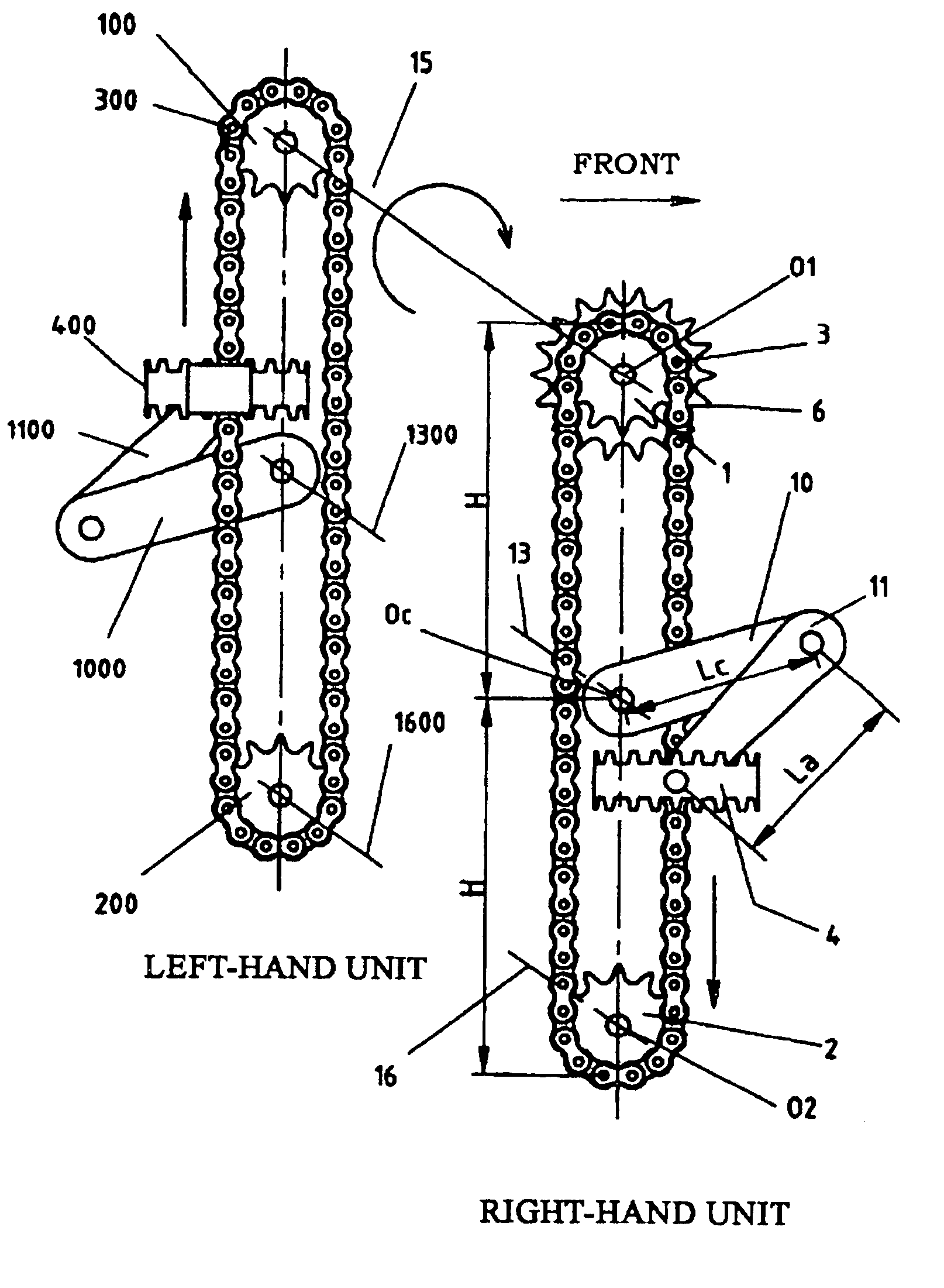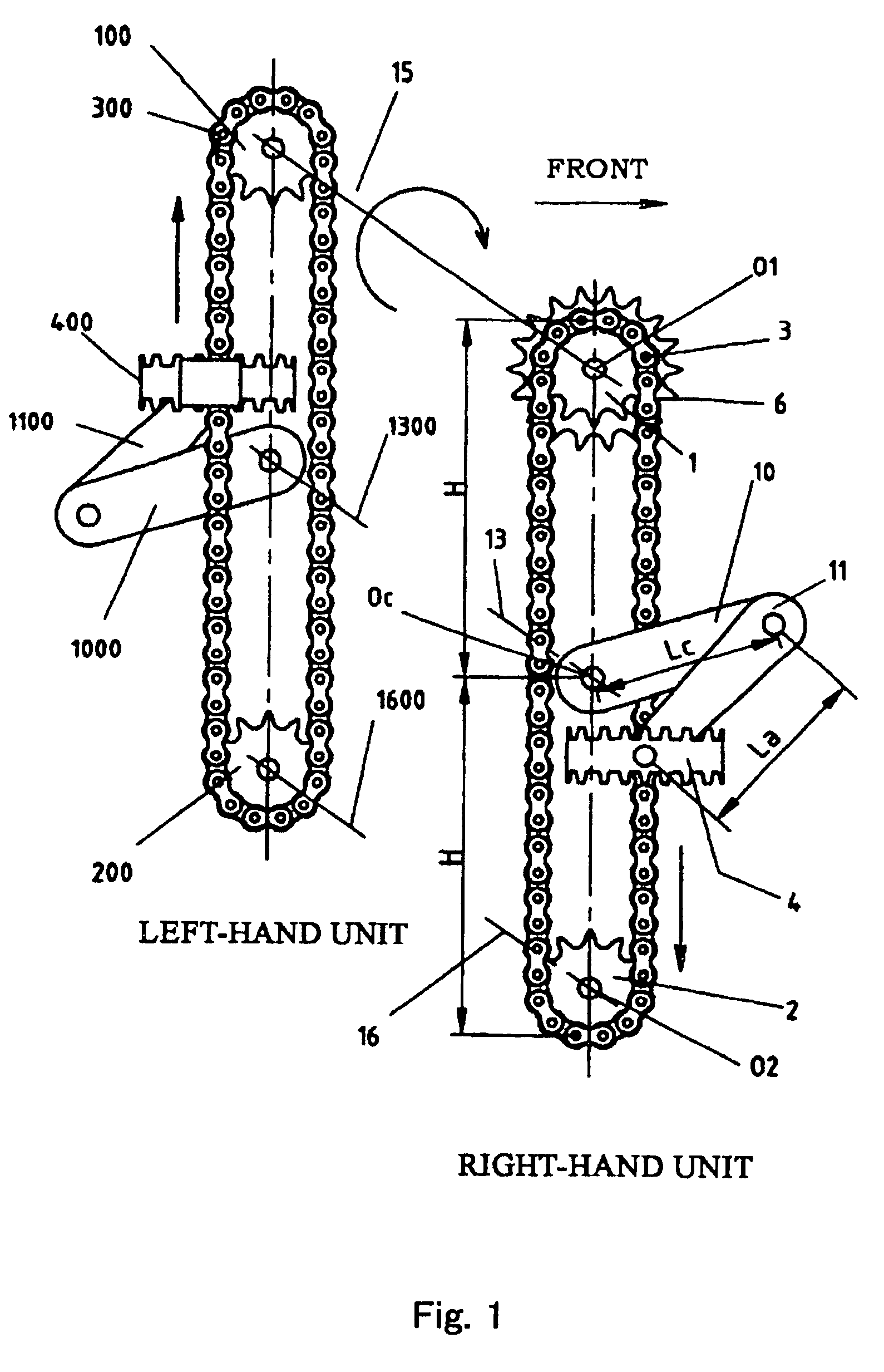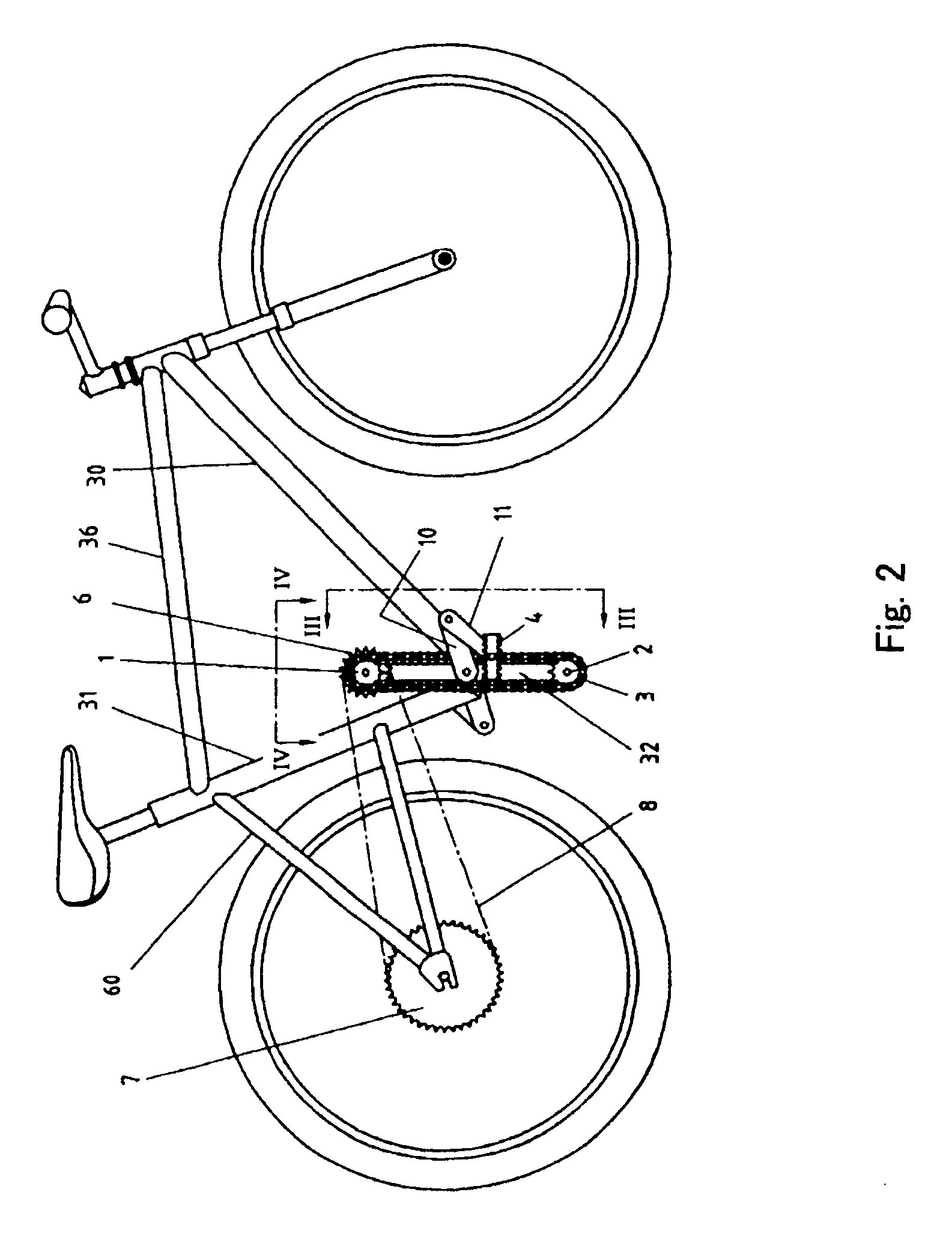Human-powered driving mechanism
a technology of driving mechanism and human-powered vehicle, which is applied in the direction of vehicle components, rider propulsion, gearing, etc., can solve the problems of reducing the speed increasing ratio below a certain level meaningless, the driving mechanism of a human-powered vehicle has not changed at all in principle, and the speed changing mechanism does not improve energy conversion efficiency. , to achieve the effect of reducing the pedal stroke, increasing the power input, and increasing the speed and torqu
- Summary
- Abstract
- Description
- Claims
- Application Information
AI Technical Summary
Benefits of technology
Problems solved by technology
Method used
Image
Examples
first embodiment
[0092]FIG. 1 shows a general arrangement of the human powered drive mechanism according to the present invention which is applied to a bicycle. Left and right human powered drive units are disposed parallel to each other. A line connecting the centers of a rotatable member and a rotatable supporting member extends vertically. Referring to FIG. 1, a human powered drive unit at a front side of the sheet of the drawing, that is, the right side unit of the rider is called “right-hand unit” (also referred to as a “first human powered drive unit”), and the other is called “left-hand unit” (also referred to as a “second human powered drive unit”), the parts of the right-hand unit are assigned with double-digit reference numerals, and the parts of the left-hand unit are assigned with the like numerals with “00” added. Left and right machine elements which need not be discriminated, such as bearings, nuts and the like are given the same reference numerals. FIGS. 2 to 9 illustrate the human p...
third embodiment
[0113]When the third embodiment is applied to a bicycle, the power input is approx 1.18 times that of a conventional bicycle, on the assumptions that crank radius of the conventional bicycle is R; that average moving speeds of the pedals of the conventional bicycle and the bicycle of this example are the same; that in the linear range of the endless driving member at the power phase, the rotational force is kept at the same value as that at a crank angle of 90° given in FIG. 13; that in the linear range of the endless driving member at the recovery phase, the rotational force is kept at the same value as that at a crank angle of 270° given in FIG. 13; in the circular range of the endless driving member, the rotational force is equal to that of the corresponding crank angle given in FIG. 13.
[0114]In the physical meaning, the work is the product of the force acting on a point and the displacement of the point in the direction of the force, and therefore, if the displacement is zero, t...
fourth embodiment
[0116]FIG. 14 is a side view of a human powered drive mechanism according to the present invention which is applied to a bicycle. FIG. 15 is a side view in which the left and right human powered drive mechanisms are removed. FIG. 16 is a side view a chain ring 6 and a transmission chain 8 are further removed. FIG. 17 is a partially sectional view in which parts of a bracket, a down tube and a seat tube are cut along a vertical plane including the center line of the bicycle. FIG. 18 illustrates details of a portion H of FIG. 17. FIG. 19 is a sectional view taken along a G—G of FIG. 16. FIG. 20 illustrates details of I portion of FIG. 17. FIG. 21 is an enlarged view of L portion of FIG. 18. FIG. 22 is a view as seen in a direction J in FIG. 18. FIG. 23 is a view as seen in the direction M in FIG. 16.
[0117]In FIGS. 14 to 19, the down tube 30 and the seal tube 31 are bifurcated at lower portions into right-hand member 30a and left-hand member 30b and into right-hand member 31a and left-...
PUM
 Login to View More
Login to View More Abstract
Description
Claims
Application Information
 Login to View More
Login to View More - R&D
- Intellectual Property
- Life Sciences
- Materials
- Tech Scout
- Unparalleled Data Quality
- Higher Quality Content
- 60% Fewer Hallucinations
Browse by: Latest US Patents, China's latest patents, Technical Efficacy Thesaurus, Application Domain, Technology Topic, Popular Technical Reports.
© 2025 PatSnap. All rights reserved.Legal|Privacy policy|Modern Slavery Act Transparency Statement|Sitemap|About US| Contact US: help@patsnap.com



